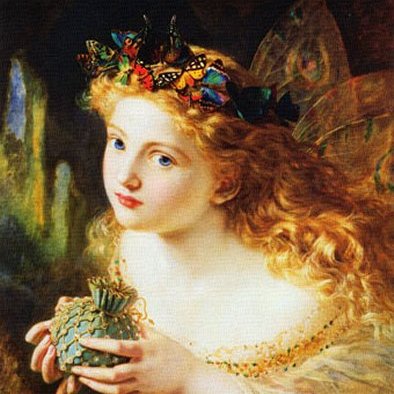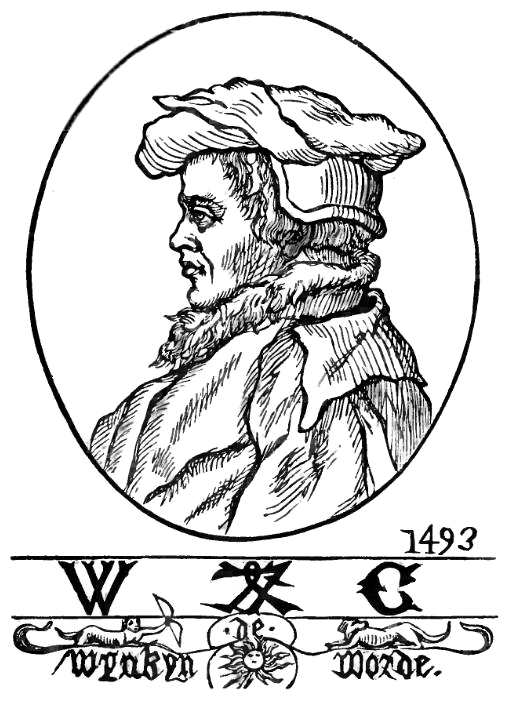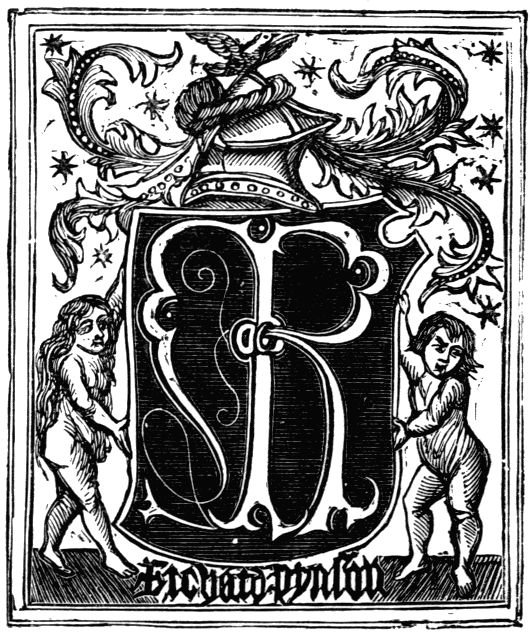|
Sir Tryamour
''Sir Tryamour'' is a Middle English romance dated to the late fourteenth century. The source is unknown and, like almost all of the Middle English romances to have survived, its author is anonymous. The 1,719-line poem is written in irregular tail rhyme stanzas composed in the Northeast Midlands dialect. There are textual ambiguities and obscurities that suggest corruptionFellows xvii. or "loose transmission." Consequently, interpretations, glosses and notes vary between editions, sometimes substantially. Plot summary King Ardus of Aragon and his wife, Margaret, have no children, so he pledges to go on crusade in the hope that God will grant him an heir. A son is conceived the night before he leaves for the Holy Land, though neither of them know it. During the king's absence his steward, Marrok, attempts to seduce the queen, who firmly rejects him. In retaliation, when the king comes home Marrok tells him that the queen was unfaithful while he was gone and that the child is not h ... [...More Info...] [...Related Items...] OR: [Wikipedia] [Google] [Baidu] |
Romance (heroic Literature)
As a literary genre, the chivalric romance is a type of prose and verse narrative that was popular in the noble courts of High Medieval and Early Modern Europe. They were fantastic stories about marvel-filled adventures, often of a chivalric knight-errant portrayed as having heroic qualities, who goes on a quest. It developed further from the epics as time went on; in particular, "the emphasis on love and courtly manners distinguishes it from the ''chanson de geste'' and other kinds of epic, in which masculine military heroism predominates." Popular literature also drew on themes of romance, but with ironic, satiric, or burlesque intent. Romances reworked legends, fairy tales, and history to suit the readers' and hearers' tastes, but by c. 1600 they were out of fashion, and Miguel de Cervantes famously burlesqued them in his novel ''Don Quixote''. Still, the modern image of "medieval" is more influenced by the romance than by any other medieval genre, and the word ''medieva ... [...More Info...] [...Related Items...] OR: [Wikipedia] [Google] [Baidu] |
Kingdom Of Aragon
The Kingdom of Aragon ( an, Reino d'Aragón, ca, Regne d'Aragó, la, Regnum Aragoniae, es, Reino de Aragón) was a medieval and early modern kingdom on the Iberian Peninsula, corresponding to the modern-day autonomous community of Aragon, in Spain. It should not be confused with the larger Crown of Aragon, which also included other territories — the Principality of Catalonia (which included the former Catalan Counties), the Kingdom of Valencia, the Kingdom of Majorca, and other possessions that are now part of France, Italy, and Greece — that were also under the rule of the King of Aragon, but were administered separately from the Kingdom of Aragon. In 1479, upon John II of Aragon's death, the crowns of Aragon and Castile were united to form the nucleus of modern Spain. The Aragonese lands, however, retained autonomous parliamentary and administrative institutions, such as the Corts, until the Nueva Planta decrees, promulgated between 1707 and 1715 by Philip V of Sp ... [...More Info...] [...Related Items...] OR: [Wikipedia] [Google] [Baidu] |
Kingdom Of Hungary In The Middle Ages
The Kingdom of Hungary was a monarchy in Central Europe that existed for nearly a millennium, from the Middle Ages into the 20th century. The Principality of Hungary emerged as a Christian kingdom upon the Coronation of the Hungarian monarch, coronation of the first king Stephen I of Hungary, Stephen I at Esztergom around the year 1000;Kristó Gyula – Barta János – Gergely Jenő: Magyarország története előidőktől 2000-ig (History of Hungary from the prehistory to 2000), Pannonica Kiadó, Budapest, 2002, , p. 687, pp. 37, pp. 113 ("Magyarország a 12. század második felére jelentős európai tényezővé, középhatalommá vált."/"By the 12th century Hungary became an important European factor, became a middle power.", "A Nyugat részévé vált Magyarország.../Hungary became part of the West"), pp. 616–644 his family (the Árpád dynasty) led the monarchy for 300 years. By the 12th century, the kingdom became a European middle power within the Western world ... [...More Info...] [...Related Items...] OR: [Wikipedia] [Google] [Baidu] |
Kingdom Of Germany
The Kingdom of Germany or German Kingdom ( la, regnum Teutonicorum "kingdom of the Germans", "German kingdom", "kingdom of Germany") was the mostly Germanic-speaking East Frankish kingdom, which was formed by the Treaty of Verdun in 843, especially after the kingship passed from Frankish kings to the Saxon Ottonian dynasty in 919. The king was elected, initially by the rulers of the stem duchies, who generally chose one of their own. After 962, when Otto I was crowned emperor, East Francia formed the bulk of the Holy Roman Empire, which also included the Kingdom of Italy and, after 1032, the Kingdom of Burgundy. Like medieval England and medieval France, medieval Germany consolidated from a conglomerate of smaller tribes, nations or polities by the High Middle Ages. The term ''rex teutonicorum'' (" king of the Germans") first came into use in Italy around the year 1000. It was popularized by the chancery of Pope Gregory VII during the Investiture Controversy (late 11th centur ... [...More Info...] [...Related Items...] OR: [Wikipedia] [Google] [Baidu] |
Breton Lais
A Breton lai, also known as a narrative lay or simply a lay, is a form of medieval French and English romance literature. Lais are short (typically 600–1000 lines), rhymed tales of love and chivalry, often involving supernatural and fairy-world Celtic motifs. The word "lay" or "lai" is thought to be derived from the Old High German and/or Old Middle German ''leich'', which means play, melody, or song, or as suggested by Jack Zipes in ''The Oxford Companion to Fairy Tales'', the Irish word ''laid'' (song).Zipes, 62 Zipes writes that Arthurian legends may have been brought from Wales, Cornwall and Ireland to Brittany; on the continent the songs were performed in various places by harpists, minstrels, storytellers.Zipes, Jack, ''The Oxford Companion to Fairytales''. Oxford UP. 2009 62-63 Zipes reports the earliest recorded lay is Robert Biker's Lai du Cor, dating to the mid- to late-12th century. The earliest of the Breton lais to survive is probably ''The Lais of Marie de Fra ... [...More Info...] [...Related Items...] OR: [Wikipedia] [Google] [Baidu] |
Marie De France
Marie de France ( fl. 1160 to 1215) was a poet, possibly born in what is now France, who lived in England during the late 12th century. She lived and wrote at an unknown court, but she and her work were almost certainly known at the royal court of King Henry II of England. Virtually nothing is known of her life; both her given name and its geographical specification come from her manuscripts. However, one written description of her work and popularity from her own era still exists. She is considered by scholars to be the first woman known to write francophone verse. Marie de France wrote in Francien, with some Anglo-Norman influence. She was proficient in Latin, as were most authors and scholars of that era, as well as Middle English and possibly Breton. She is the author of the ''Lais of Marie de France''. She translated Aesop's Fables from Middle English into Anglo-Norman French and wrote ''Espurgatoire seint Partiz'', '' Legend of the Purgatory of St. Patrick'', based upon a ... [...More Info...] [...Related Items...] OR: [Wikipedia] [Google] [Baidu] |
Robert W
The name Robert is an ancient Germanic given name, from Proto-Germanic "fame" and "bright" (''Hrōþiberhtaz''). Compare Old Dutch ''Robrecht'' and Old High German ''Hrodebert'' (a compound of '' Hruod'' ( non, Hróðr) "fame, glory, honour, praise, renown" and ''berht'' "bright, light, shining"). It is the second most frequently used given name of ancient Germanic origin. It is also in use as a surname. Another commonly used form of the name is Rupert. After becoming widely used in Continental Europe it entered England in its Old French form ''Robert'', where an Old English cognate form (''Hrēodbēorht'', ''Hrodberht'', ''Hrēodbēorð'', ''Hrœdbœrð'', ''Hrœdberð'', ''Hrōðberχtŕ'') had existed before the Norman Conquest. The feminine version is Roberta. The Italian, Portuguese, and Spanish form is Roberto. Robert is also a common name in many Germanic languages, including English, German, Dutch, Norwegian, Swedish, Scots, Danish, and Icelandic. It can be use ... [...More Info...] [...Related Items...] OR: [Wikipedia] [Google] [Baidu] |
Chrétien De Troyes
Chrétien de Troyes (Modern ; fro, Crestien de Troies ; 1160–1191) was a French poet and trouvère known for his writing on Arthurian subjects, and for first writing of Lancelot, Percival and the Holy Grail. Chrétien's works, including ''Erec and Enide'', ''Lancelot'', ''Perceval'' and ''Yvain'', represent some of the best-regarded of medieval literature. His use of structure, particularly in ''Yvain'', has been seen as a step towards the modern novel. Life Little is known of his life, but he seems to have been from Troyes or at least intimately connected with it. Between 1160 and 1172 he served (perhaps as herald-at-arms, as Gaston Paris speculated) at the court of his patroness Marie of France, Countess of Champagne, daughter of King Louis VII and Eleanor of Aquitaine, who married Count Henry I of Champagne in 1164. Later, he served the court of Philippe d'Alsace, Count of Flanders. Works Chrétien's works include five major poems in rhyming eight-syllable couplets. Fo ... [...More Info...] [...Related Items...] OR: [Wikipedia] [Google] [Baidu] |
Wynkyn De Worde
Wynkyn de Worde (died 1534) was a printer and publisher in London known for his work with William Caxton, and is recognised as the first to popularise the products of the printing press in England. Name Wynkyn de Worde was a German immigrant to England. His name is given in the forms ''Wynkyn de Worde'', ''Wynken de Worde'', ''Wynkyn de Word'', ''Wijnkijn de Worde'', and ''Winandus van Worden'' ("Wynkyn" is a diminutive of "Wynand"). It is also given 15 times in the sacrist's roll of Westminster Abbey and in city records as variants of "John Wynkyn", including ''John Wynkyn'', ''Johannes Wynkyn'', ''Jan Wynkyn'', and ''Jan van Wynkyn''. He is also recorded as ''Willelmo Wynkyn'' ("William Wynkyn") once and as ''Mr. Wylkyns'' eight times. His son Richard is recorded as ''Richard Wynkyn'' and ''Rycharde de Worde''. Some authors have therefore concluded that his real name was John Wynkyn (or Wynand) and that "de Worde" was "merely a place name," while others have concluded tha ... [...More Info...] [...Related Items...] OR: [Wikipedia] [Google] [Baidu] |
Richard Pynson
Richard Pynson (c. 1449 – c. 1529) was one of the first printers of English books. Born in Normandy, he moved to London, where he became one of the leading printers of the generation following William Caxton. His books were printed to a high standard of craftsmanship, and his Morton Missal (1500) is regarded as among the finest books printed in England in the period. Pynson was appointed King's Printer to Henry VII and Henry VIII, and printed and published much official legal material. In addition he produced a wide range of books, including the first printed cookery book in English, an illustrated edition of ''The Canterbury Tales'', and the first English book to use roman type. Life and career Early years Pynson was Norman by birth.Neville-Sington, PamelaPynson, Richard (c. 1449–1529/30), printer" ''Oxford Dictionary of National Biography'' Oxford University Press, 2008. Retrieved 24 October 2020 According to the antiquarian Joseph Ames, the official document (now lo ... [...More Info...] [...Related Items...] OR: [Wikipedia] [Google] [Baidu] |
Middle English Literature
The term Middle English literature refers to the literature written in the form of the English language known as Middle English, from the late 12th century until the 1470s. During this time the Chancery Standard, a form of London-based English became widespread and the printing press regularized the language. Between the 1470s and the middle of the following century there was a transition to early Modern English. In literary terms, the characteristics of the literary works written did not change radically until the effects of the Renaissance and Reformed Christianity became more apparent in the reign of King Henry VIII. There are three main categories of Middle English literature, religious, courtly love, and Arthurian, though much of Geoffrey Chaucer's work stands outside these. Among the many religious works are those in the Katherine Group and the writings of Julian of Norwich and Richard Rolle. After the Norman conquest of England, Law French became the standard language of c ... [...More Info...] [...Related Items...] OR: [Wikipedia] [Google] [Baidu] |






.jpg)